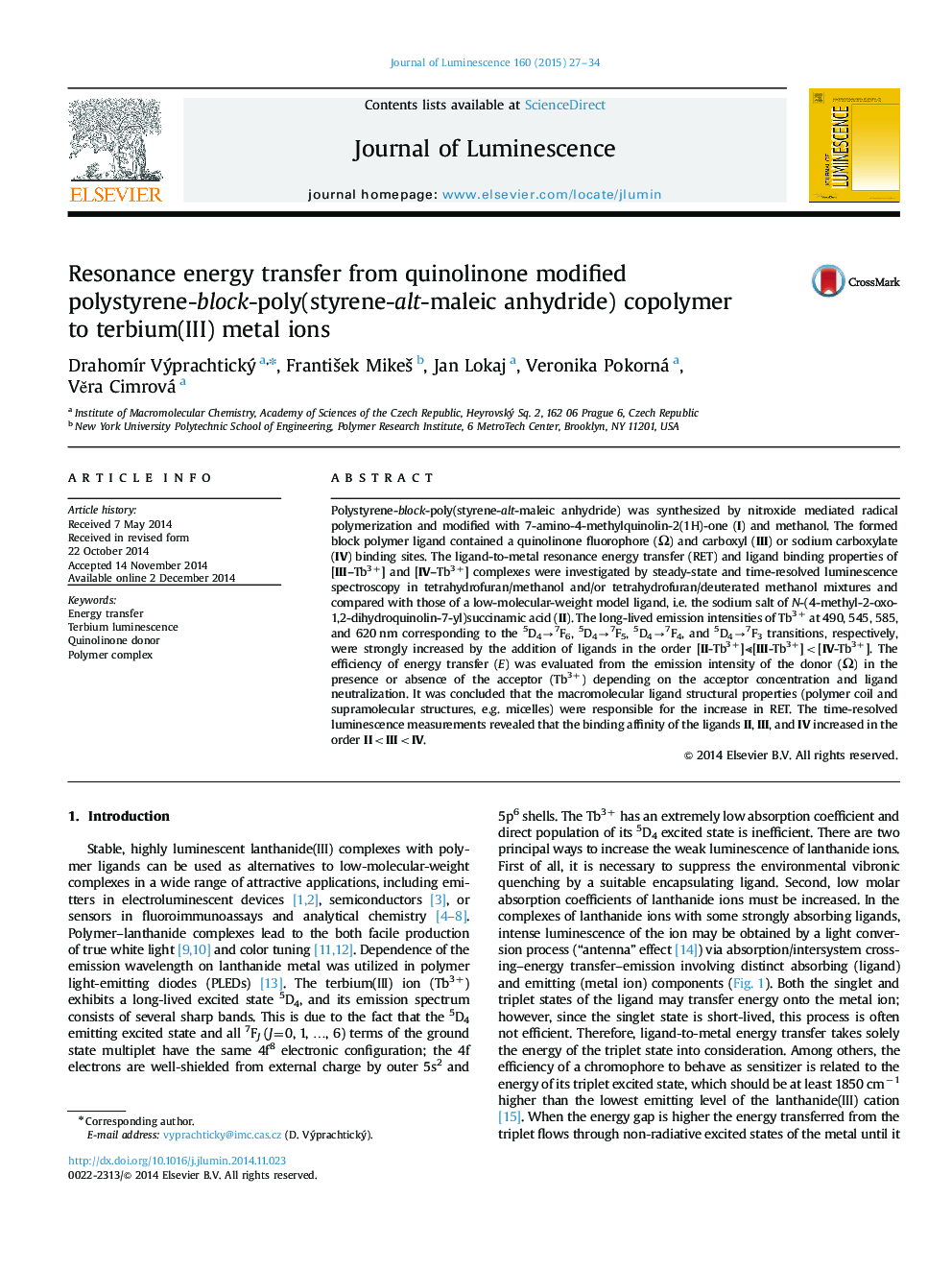| Article ID | Journal | Published Year | Pages | File Type |
|---|---|---|---|---|
| 5399347 | Journal of Luminescence | 2015 | 8 Pages |
Abstract
Polystyrene-block-poly(styrene-alt-maleic anhydride) was synthesized by nitroxide mediated radical polymerization and modified with 7-amino-4-methylquinolin-2(1H)-one (I) and methanol. The formed block polymer ligand contained a quinolinone fluorophore (Ω) and carboxyl (III) or sodium carboxylate (IV) binding sites. The ligand-to-metal resonance energy transfer (RET) and ligand binding properties of [III-Tb3+] and [IV-Tb3+] complexes were investigated by steady-state and time-resolved luminescence spectroscopy in tetrahydrofuran/methanol and/or tetrahydrofuran/deuterated methanol mixtures and compared with those of a low-molecular-weight model ligand, i.e. the sodium salt of N-(4-methyl-2-oxo-1,2-dihydroquinolin-7-yl)succinamic acid (II). The long-lived emission intensities of Tb3+ at 490, 545, 585, and 620 nm corresponding to the 5D4â7F6, 5D4â7F5, 5D4â7F4, and 5D4â7F3 transitions, respectively, were strongly increased by the addition of ligands in the order [II-Tb3+]⪡[III-Tb3+]<[IV-Tb3+]. The efficiency of energy transfer (E) was evaluated from the emission intensity of the donor (Ω) in the presence or absence of the acceptor (Tb3+) depending on the acceptor concentration and ligand neutralization. It was concluded that the macromolecular ligand structural properties (polymer coil and supramolecular structures, e.g. micelles) were responsible for the increase in RET. The time-resolved luminescence measurements revealed that the binding affinity of the ligands II, III, and IV increased in the order II
Related Topics
Physical Sciences and Engineering
Chemistry
Physical and Theoretical Chemistry
Authors
DrahomÃr Výprachtický, FrantiÅ¡ek MikeÅ¡, Jan Lokaj, Veronika Pokorná, VÄra Cimrová,
